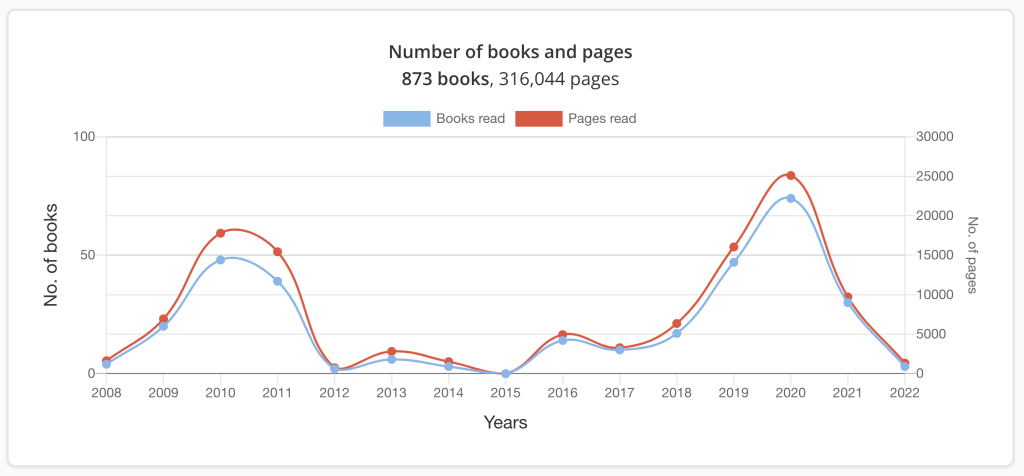When asked how many books I read a year, my automatic response is “about 50.” Reading is both an escape and a way to learn “firsthand” about other worlds and lives, and one reason I love being an author is that getting lost in a novel can be justified as “research!”
Stories will always be more important to me than data, so I don’t do a great job of tracking everything I read. Which is what inspired this post today: as a reader, how do you track the books you’ve read, especially any favorites?

Right at the moment, I’m reading three very different novels. Horse (Geraldine Brooks) and Trust (Hernan Diaz) are for two different book clubs; I’m also almost finished with (and love enough that I will probably review) Remarkably Bright Creatures (Shelby Van Pelt). If you’re curious about format, the current tally is evenly split: one audiobook, one hardcover, and one borrowed ebook.
Reader Sites
It was only once I’d started this blog post that I remembered to add any of the three to my “currently reading” list on Goodreads. (That list also includes one permanent addition, Ferry to Cooperation Island, though I have no idea if leaving it there has attracted any readers.) After I finish each book, I will update my progress… eventually.
Depending on how tardy I am with that update, my “reading dates” (which supposedly show how long it took to finish) may be wildly inaccurate. Since I no longer post reviews anywhere but here, have never dropped into any community rabbit holes (“check out what your high school sweetheart is reading this week!”), and don’t need external motivation to start my next book, I definitely don’t require such a robust platform to track my reading.
(And Amazon, owner of Goodreads, certainly doesn’t need any more data about me.)
I’ve also set up an account on StoryGraph—partly because they automagically keep my profile updated when I add to Goodreads. Their algorithm makes good recommendations, and their graphs and pie charts are a fascinating rabbit hole of their own; apparently I prefer “quiet, thoughtful” historical fiction—and only read 11 percent non-fiction! Pretty to look at—and mostly confirming my own very unscientific conclusions. But the accuracy of such charts depends on consistent data entry, and that will never be my first literary priority.
My Fantasy Book List, and How I Review
What would be great—though also very, very spooky—is a list that automagically fills itself out, right after I finish (or am finished with) a book. Like Goodreads and StoryGraph, it would include the book’s ISBN so I can see the cover and read a description; that’s quite helpful when I go back a year or three later and can’t remember the story. Otherwise, it would log only the information I want to keep track of: when I read it, how long it took me to finish (if I did so), and what format I read it in. (I have a theory that I retain more when reading with my eyes on actual paper, though again I haven’t bothered to verify that with actual data.)
If I’m really affected by a book, I usually post about it here on the blog. I’ve written 85 book reviews since 2009; if you’re curious, there’s also a blog post explaining what I do and do not include. (read How to Write a Useful Book Review).
Stories, Not Data
The stories are what matter to me, so that fantasy booklist will likely remain just a fantasy—especially since several readers have said they like to see what I’m reading. But I’m still curious: those of you who read more than a few books a year, how do you keep track of your besties? Do you even bother, and if so: why? Share your thoughts in the comments, or send me an email: I read every single one, with gratitude.
PS: Thanks to StoryGraph—and researching this blog post—I now “know” that I’ve read 873 books since 2008. Which works out to an average of 62 books each year… but since that count also includes several favorites from the many years before we could keep track of such things online, I’m sticking with my usual answer: 50.
Thanks for reading! Let me know if you track the best books you read… and if so, how and why.